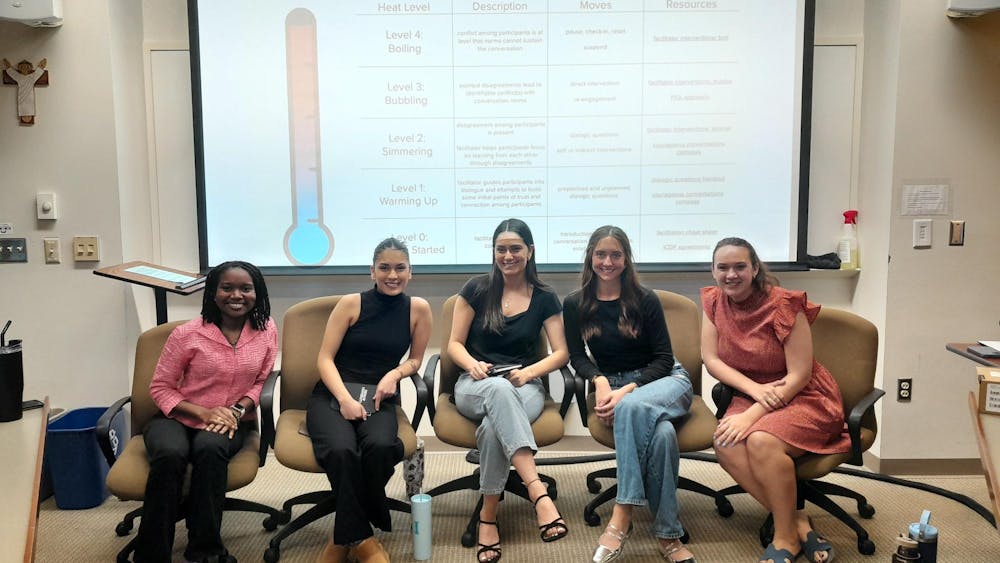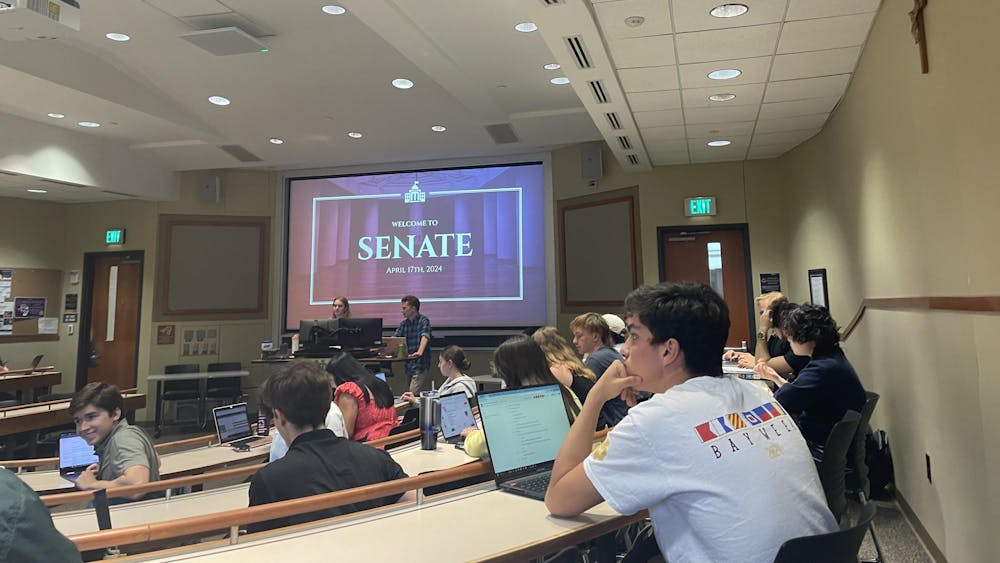History and theology experts explored the conception of the Bible belonging to Stephen Badin, an early American priest who purchased the land upon which the University of Notre Dame currently resides, in the Hesburgh Libraries' Department of Rare Books and Special Collections Friday.
Director of the Cushwa Center for the Study of American Catholicism Kathleen Cummings introduced the four “Badin Bible Symposium” panelists. Cummings said an expatriate Irish Catholic by the name of Mathew Carey published the first Catholic version of the Bible in the United States in 1790. Cummings said John Carroll of Baltimore, the first bishop of the new American nation, bought one of Carey's first editions and gave it to the first priest he ordained, Stephen Badin.
Badin brought the Bible with him as he traveled through the Midwest and Upper South, Cummings said. Badin left the book with a religious order he helped found, the Sisters of Loretto, before traveling north to minister to the Potawatomi in the South Bend area and purchase the land that would become the University of Notre Dame.
Two hundred years later, a volunteer archivist at the Sisters of Loretto found the Bible and the order contacted Notre Dame. The University purchased the Bible this summer with help from the Hesburgh Library, Cushwa Center and several faculty, Cummings said. The Bible is now on display in the Special Collections and Rare Book Room, a short distance from the Log Chapel, where Badin is laid to rest.
Margaret Abruzzo, associate professor of history at the University of Alabama, said Carey published the Bible to promote a good image of Catholics as religious liberty and toleration reached a high point in the States.
Abruzzo said Badin, who migrated to the United States to escape the religious persecutions of the French Revolution, speaks to the influence of French culture on American Catholicism. Abruzzo said Carroll’s inscription in the Bible was written in English, which illustrates the importance of being multilingual in early America. Carroll’s handwritten inscription also revealed the bishop’s and priest’s close relationship, as did the letters they exchanged later on, Cummings said.
“The letters between [Carroll and Badin] illustrate the intimate scale of the diocese, despite the 865,000 square miles,” Abruzzo said. “It illuminates Carroll’s direct and personal involvement in the affairs of his priests. Badin would write Carroll to ask for pastoral advice, to sort out theological problems, to request dispensations. But he also confided his spiritual struggles, his loneliness and his sense of inadequacy in the face of his job.”
Notre Dame Professor of Theology Gary Anderson said Carey used the Douay-Rheims translation of the Bible, made by English exiles in France who translated directly from St. Jerome’s Latin Vulgate in the 16th century. Anderson said Jerome translated from the original Greek and Hebrew books of the Bible working in the late fourth and early fifth centuries. Anderson said certain books Jerome included did not have an original version in Hebrew.
Anderson said protestant reformers in the 16th century took Jerome’s insight to heart but downplayed or eliminated these books, while Catholics — specifically at the Council of Trent — wanted to keep them, leading to two distinct versions of the Bible.
“Trent didn’t require the Vulgate as the necessary text for use in any kind of vernacular translation, but it did say that the Vulgate was free from area in matters of morals and faith and as a result of that, Catholics, when they translated the Bible into the vernacular, took the Vulgate as their norm,” Anderson said.
Patrick Griffin, chair of Notre Dame’s history department, spoke on the lives of Carroll, Carey and Badin and their connections with the Age of Revolution.
Badin hated the French Revolution because of the persecution of Catholics, Griffin said. Carey was close friends with Benjamin Franklin and sympathized with revolutionary ideas. Carroll experienced discrimination as a Catholic but was widely respected because he was wealthy and because he supported the Patriots during the American Revolution, Griffin said.
“We see some of Badin’s story in [Carroll’s] story, but like Carey, he also saw the liberating possibilities of toleration in an American republic shaped by the forces of revolution,” Griffin said. “Tolerating Catholics, Carroll believed, would allow Americans to argue reasonably with one another about various truth claims, differences he hoped would fade through faith working hand in hand with reason … he argued that Catholics could become good citizens and good republicans.”
Professor of History Mark Noll said the Carey Bible was unusual not only because it was a Catholic Bible, but because it was a revised Douay-Rheims translation that reflected the Protestant King James’ version — emblematic of a period of toleration and religious freedom in the United States and was particularly large and well-made for the time.
“It’s a good-sized Bible, already by the mid-18th century, production of the King James Bible had become ... a more compact, more portable version of the Scriptures,” Noll said. “This particular version is unusual not just for being the first Catholic Bible, but for the care, the size and the binding of this particular scripture.”













